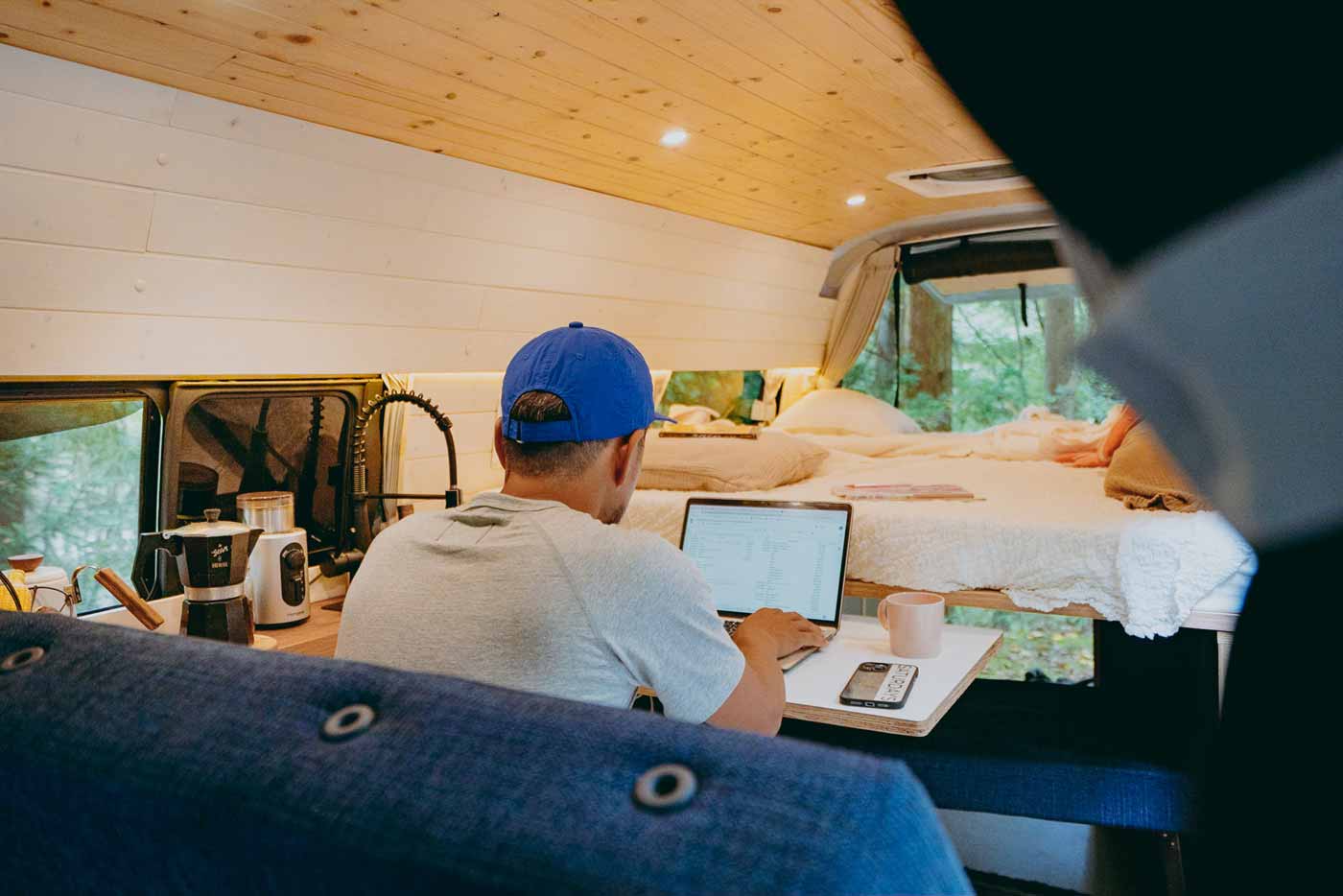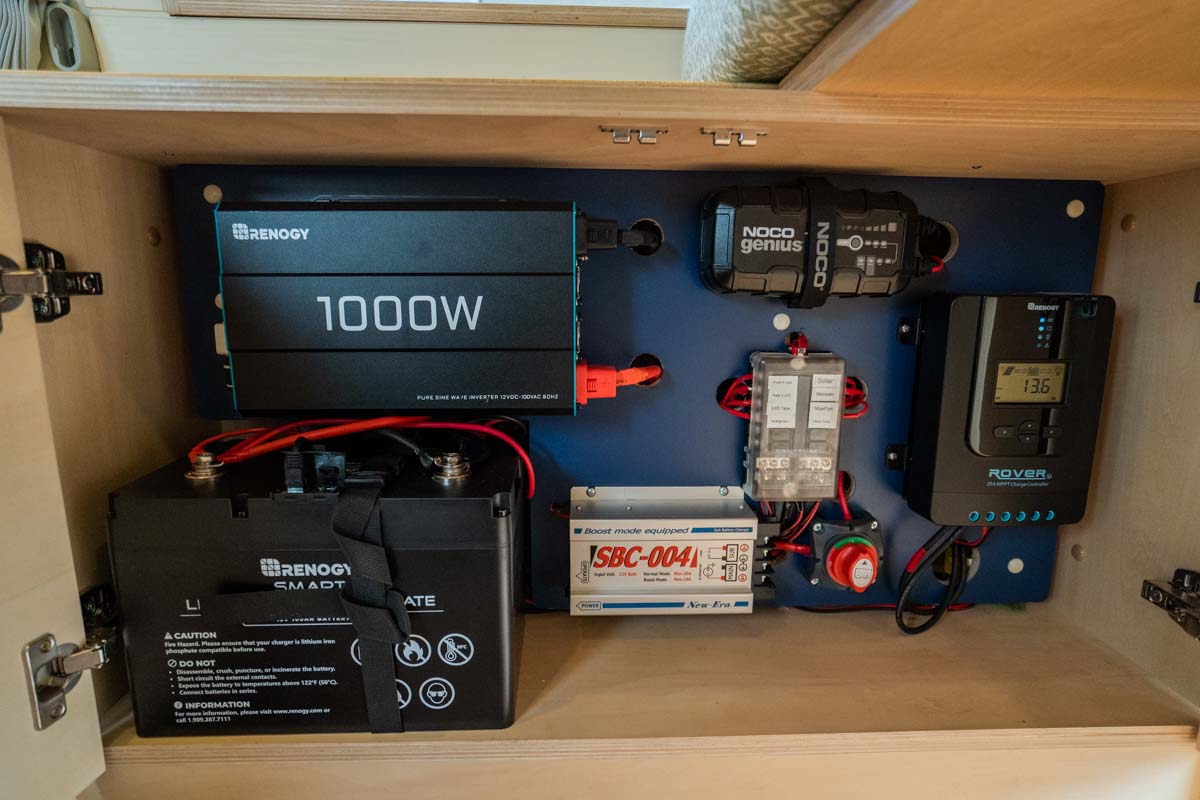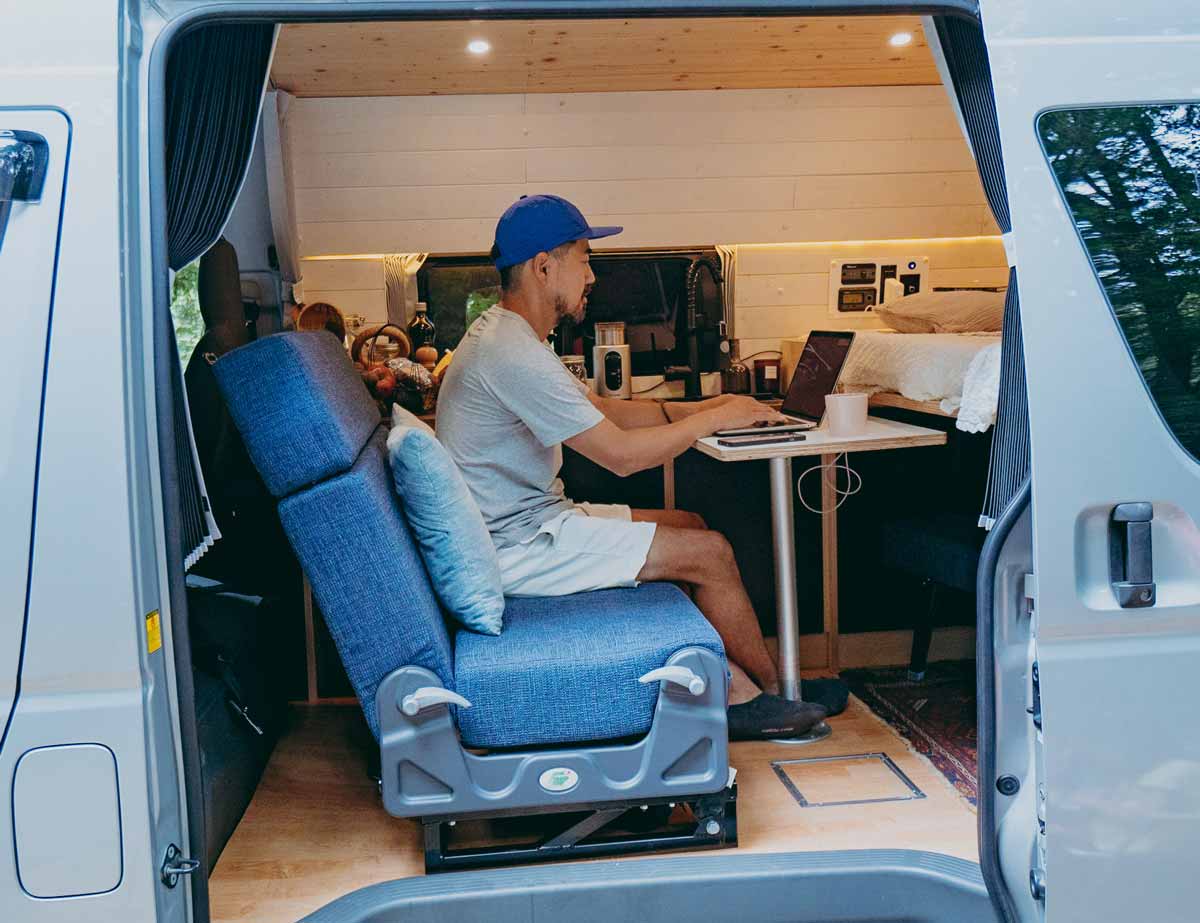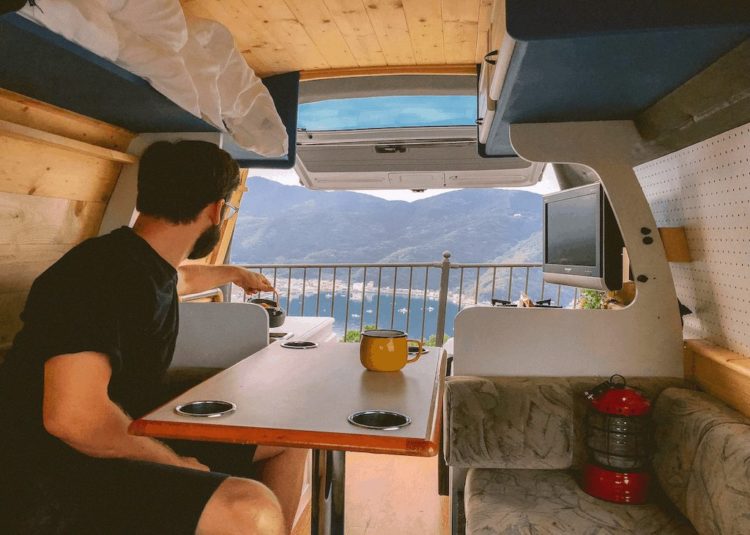Remote work, vanlife, workation certainly are not new lifestyles but largely due to Covid-19, more and more professionals have been working remotely and re-evaluating their work-life balance. Like many other types of alternative lifestyles, working from a campervan has its rockstar side as well as its challenges when compared to working from home or an office. Many campervans are basically fully equipped tiny homes that allow you to enjoy fresh morning coffee with beautiful views, cold beer with a sunset and cook a quickdinner right after you come back from a day trip. Working from a campervan allows for meaningful breaks, being able to take part in healthy activities, and the freedom to work from nature and locations where you want to be. If you’ve never used a campervan before or are considering working from the road then here are a few tips and things to consider.

Reliable Wifi Access
When travelling and working on the road in Japan, accessing reliable wifi can be difficult. More and more campsites and locations are starting to offer wifi but it’s not always reliable and doesn’t allow for the flexibility to work from wherever you want. To have more freedom and a reliable internet connection you can quite easily tether your computer to your smartphone’s internet data, rent/buy a portable wifi hotspot, or search and pre-plan locations such as cafes, convenience stores, michi-no-eki and campsites etc. that offer a wifi connection.
Another great and lesser well-known option for reliable remote work wifi is by subscribing to workation co-working spaces. There are various remote work subscription companies with shared office work spaces throughout Japan that provide reliable internet, allow for campervans to be parked on site and offer clean and comfortable co-working environments. Here’s an example of a nature based co-working space here in Japan. https://www.morino-office.com/
If you are planning to tethering to your phone data or to use a portable wifi router but are a high data user ie. streaming video and transferring large files, be careful to read the fine print before purchasing as most portable wifi companies limit the data usage per day or month which can mean unusable or slow internet once a certain amount of data is used. We have used this Wifi portable router in the past and were happy with the service 50GB per month http://www.mona-wifi.com/ and you can search and compare the latest offerings from portable wifi providers here https://kakaku.com/mobile_data/world-wifi/wifi-rental/
More info:
Some campsites with wifi access
https://camphack.nap-camp.com/1857
Some campsites suitable for workcation

Secondary Battery System
When working from the road being able to charge your phone, computer, and other electronics can be critical. Depending on your needs it’s important to have an understanding of campervans sub-battery systems. Most campervans today include some sort of built in sub or secondary battery system. It’s good to know the size of the sub battery, how it can be recharged, and roughly how long it takes to recharge based on the charging method.
For working from the road we recommend at least 100AH-200AH lithium battery in order to have plenty of juice to charge electronics and run a fridge etc.) It’s also important to never drain sub-battery systems completely to zero as this can cause damage to the battery. You’ll need to monitor your usage and plan around charging needs, especially on extended workation trips.
To recharge the campervan sub battery system there are typically three main ways to do so.
A/C shore power
The first is through an A/C shore power connection. If you have access to an A/C outlet while parked you can use an electrical extension cable and connect the campervan’s sub battery to an external outlet to charge. Depending on the battery, and charge level it can take anywhere from 3-16 hours to recharge fully using an A/C outlet.
Charging via vehicle alternator
Another way to charge the sub-battery system is while driving. Many sub-battery systems will have an isolator/charger that connects to the vehicle’s alternator and allows for the sub battery to be recharged while driving. The recharge time of this method depends on the output of the alternator and of course the discharge state of the battery. If a 100AH battery is at 50%, and the onboard charge can do between 15-20Amps then it typically would take between 3-6 hours to recharge the battery while driving. Naturally the recharge time is different depending on the size of the sub-battery, charge %, and the output of the alternator.
Solar Panels
The third way of charging the sub battery system is through solar. For those planning to do extended trips or looking to stay off-grid then this option is great for keeping the sub-battery slowly charging and topped up throughout the day even without needing to run the engine. Due to limited space on the top of the vehicle, the solar panels on the top of the van often don’t provide enough power to recharge a sub-battery as quickly as the other two aforementioned charging options. However, solar panels on campervans do allow for a constant slow charge that helps to keep the sub battery topped up which is perfect for those planning to stay and relax at off-grid nature locations for extended periods of time.
Comfortable Workspace
Working while on the road generally is fun and refreshing. Naturally, working from the campervan bed can be nice, but for extended hours of time can get very uncomfortable and not be conducive for productive work. If you’re working for an extended amount of time or over the course of a few days, having a comfortable work area and table can be important for staying focussed and getting things done. We highly suggest making sure your van has a space that allows you to sit comfortably and place your computer at an appropriate distance and height. This work space can be made even better with easy access to the power outlets, fridge, and of course coffee.

Where to park for the night
One wonderful aspect about travelling in a campervan is that you have your bed with you at all times. With that said, you can’t always just park anywhere and for maximum comfort we suggest choosing locations with easy toilet access and ideally within 10-15 minutes to an onsen. Some onsen will even allow campervans to park in their parking for the night.
If you’re travelling during Japan’s hot summer months then we suggest parking at locations with higher altitude and under trees so that you can stay cool at night and in the early morning when the sun starts to rise.
Michi-no-eki
While on the road, if you don’t have a pre-planned space the easiest location tends to be Michi-no-eki or “road-side stations” which are free to park and can be found all over Japan. You can find them by searching Michi-no-eki google maps and through websites like this https://www.michi-no-eki.jp/ Michi-no-eki typically have 24/7 toilet access and some even have wifi and onsen as part of the facilities.
Campsites
If you prefer to stay at a campsite then you can use https://japan.nap-camp.com/en to help find and book one that matches your needs. While there are some free campsites, usually operated by local governments, they typically require registration via their website. If you didn’t have time to reserve a campsite in advance, there are some campsites that allow drop-in. Campsite booking availability is busiest during holidays, weekends, and during warmer months, so keep that in mind when planning workation trips.
Try out workation by renting a campervan
Working while on the road is a lot of fun but is not for everyone. For those who are interested in giving vanlife and workation a go, we highly suggest renting a campervan and testing it out for yourself. Dream Drive (www.dreamdrive.life/booking) rental vans come equipped with outdoor chairs and benches, portable batteries, tableware, and other items necessary for the outdoors. Renting a campervan is a great way to test out remote work without the big money and time investment of buying or building your own.



